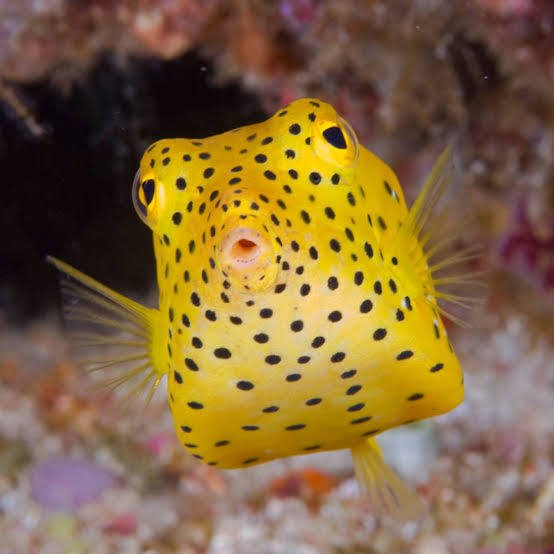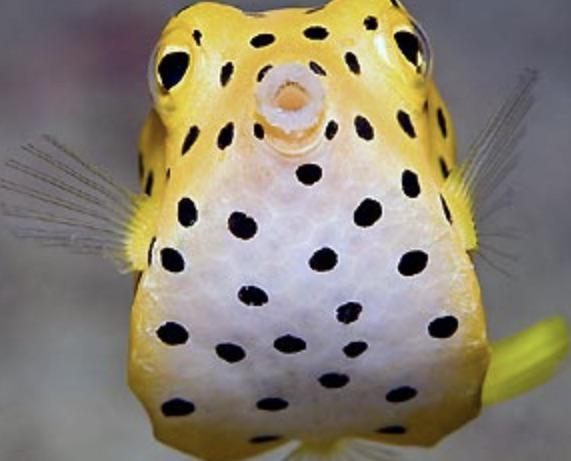


While we make every effort to ensure that our online stock levels are accurate and up to date, some products—particularly those that are perishable or subject to daily changes—may vary in availability. This includes livestock, fish, corals, and both fresh and frozen foods. Due to the nature of these items and their dependence on factors such as shipment schedules, health status, and in-store demand, availability can change rapidly and may not always be reflected in real time on our website.
To avoid disappointment, we strongly encourage customers to confirm the availability of these products before placing an order or visiting In-Store. You can do this easily by using the "Ask a Question" tab on the product page or by calling us directly on 0460 961 696 .
Our friendly team will be happy to assist and provide the most up-to-date information on current stock.

A literal swimming box with personality to spare, the Yellow Boxfish (Ostracion cubicus) is one of the ocean’s most recognisable oddballs. As juveniles, they’re bright yellow with bold black spots—an unmistakable and adorable addition to any large marine aquarium. Their clumsy, hovercraft-like swimming and curious nature make them instant crowd favourites. But don’t be fooled by the cuteness—this species requires specialised care and is best left to experienced marine keepers due to its toxin risk and sensitivity.
Species: Ostracion cubicus
Common Names: Yellow Boxfish, Cubicus Boxfish, Polka-Dot Boxfish
Origin: Indo-Pacific – widespread across coral reefs from East Africa to Australia, including the Great Barrier Reef
Light Requirements: Moderate
Diet: Omnivorous – feeds on a mix of chopped seafood, mysis shrimp, marine algae, high-quality pellets/gel foods, and sponge-based foods
Maximum Size: Up to 45 cm in the wild; typically 20–25 cm in captivity
Temperament: Peaceful but not reef-safe
Care Level: Advanced
Aquarium Setup:
Yellow Boxfish require a large, mature marine aquarium of at least 400 litres, with open swimming space, low-to-moderate flow, and plenty of live rock for grazing and exploration. Their awkward swimming makes them prone to injury near strong pumps or tight rockwork—use sponge guards and gentle current. These fish are best housed in FOWLR (Fish Only With Live Rock) setups, as they may nip at sessile inverts, polyps, and soft corals.
Water Parameters:
Temperature: 24–27°C
pH: 8.1–8.4
Salinity: 1.023–1.025
Alkalinity: 8–12 dKH
Calcium: 400–450 ppm
Magnesium: 1250–1350 ppm
Growth and Maintenance:
While slow-growing, the Yellow Boxfish can live for many years with proper care. However, they are extremely sensitive to stress, and when frightened or dying, may release a toxin (ostracitoxin) that can be fatal to tankmates. Because of this, they’re best housed singly or with very peaceful fish. Avoid netting—instead, use a container to transfer. Consistent feeding and stable conditions are essential for long-term health.
Care Tips:
✔ Never use a net—always transfer using a cup or container
✔ Keep tankmates peaceful and stress levels low
✔ Feed 2–3 times daily with a varied, vitamin-enriched diet
✔ Use caution with powerheads and filters—boxfish can get sucked in
✔ Not suitable for reef tanks with corals or inverts
Compatibility:
Best kept alone or with other peaceful, slow-moving species such as gobies, blennies, and seahorses. Avoid triggers, puffers, tangs, and any fin-nippers or aggressive species. Due to toxin risks, never house with delicate or valuable species that can’t be easily separated in an emergency.
Availability:
Occasionally available in the Australian marine trade, especially as juveniles. Juvenile Yellow Boxfish are the most vibrant and easiest to acclimate, but long-term care requires experience. Ask us about current availability, transport recommendations, and suitable tankmates.
Disclaimer:
"Boxfish can release toxins under stress or during death that may be lethal to tankmates. Only suitable for advanced aquarists in well-managed, large systems with peaceful companions."




